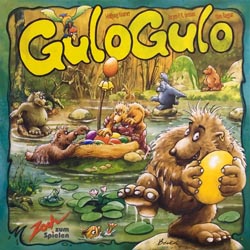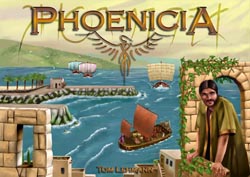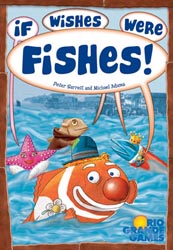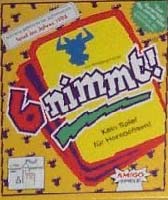 We played Mammoth Hunters for the second time this year and once again experienced a good close game. There were 4 of us playing which means 2 of the 12 areas of the board start with a glacier on them and there is 25 pieces of stone (the game currency) in the pot.
We played Mammoth Hunters for the second time this year and once again experienced a good close game. There were 4 of us playing which means 2 of the 12 areas of the board start with a glacier on them and there is 25 pieces of stone (the game currency) in the pot.
The first round saw Graham adding new hunters far more quickly than any other player and even though he didn’t dominate the areas where the mammoths grazed for the extra victory points that brings, the extra points from his scattered but numerous hunters ensured a healthy 17pts, the rest of us all ended on 12pts.
The nature of Mammoth Hunters meant that Graham was mercilessly picked on in the next round but despite this he was still able to hold on well scoring a reasonable 13pts. Tony on the other hand took advantage of this to score 19pts and take the lead by a slender 1pt. I hadn’t been getting hunter adding cards, rather ones that shifted your existing hunters around, in hind sight I should have ditched these cards and cycled through to get what I needed. Consequently I found myself in last on 23pts, but with the consolation of placing a new glacier piece to stuff my opponents.
The third round was a cagey affair with all the players trying to set themselves up for the final round and with no-one wanting to play the last ‘dark’ card to finish the round and shoot themselves in the foot. The scores at the end of round three was Tony on 41pts, Graham on 37pts, me on 33pts and Kevin on 29pts. This unexpected rise to third for me meant Kevin placed the new glacier which he inexplicably used to stuff me and Graham and not the leader!
The final round seemed to mainly consist of everyone using there stock piles of stones to pay for cards to maximize their points, this resulted in most areas having the same amount of each players hunters, the favorite dark card being played was the remove a mammoth, which as everyone had hunters in mammoth areas was declined. As the last dark card action doesn’t happen in the final round it came down to one player having no stones left to pay for a light card and having to play a dark card that took the remaining stones bringing and end to proceedings.
The final count revealed that Tony had held on to edge out Graham by a point despite a mammoth and hunters move card being the last play by Graham. Me and Kevin tied for third (and last).
I really like the mechanics of Mammoth Hunters, the light and dark cards, the variable round endings based on either the willingness to take a potential hit or being forced to due to running out of stones and even the last placed player each round gets the fun of placing the new glacier piece to cause maximum grief. It gets a 8/10 for me.
Steve Perkins

 The next session of the Shrewsbury Boardgames Club is on Friday 5th October and is at Garry’s house.
The next session of the Shrewsbury Boardgames Club is on Friday 5th October and is at Garry’s house. Martin Wallace’s Essen release is an economic game set in industrial revolution Lancashire. Players take the roles of entrepreneurs attempting to make the most money from the various industries of the time.
Martin Wallace’s Essen release is an economic game set in industrial revolution Lancashire. Players take the roles of entrepreneurs attempting to make the most money from the various industries of the time. The winners of the 2007 International Gamers Awards have just been announced. In the multiplayer category, the award went to Through The Ages, designed by Vladimir Chvatil and published by Czech Board Games.
The winners of the 2007 International Gamers Awards have just been announced. In the multiplayer category, the award went to Through The Ages, designed by Vladimir Chvatil and published by Czech Board Games. Persuaded everyone to play a game last night and chose Gulo Gulo, which only Chris has played before. It is a fun game for the family, typical of Zoch, and demonstrates the genius of Wolgang Kramer yet again. Those with fat fingers (i.e. me) are at a bit of a disadvantage and more likely to trigger the alarm but it is quick with cute wolverine pieces. Jan showed us all how to play and beat us to grab the purple eggs.
Persuaded everyone to play a game last night and chose Gulo Gulo, which only Chris has played before. It is a fun game for the family, typical of Zoch, and demonstrates the genius of Wolgang Kramer yet again. Those with fat fingers (i.e. me) are at a bit of a disadvantage and more likely to trigger the alarm but it is quick with cute wolverine pieces. Jan showed us all how to play and beat us to grab the purple eggs. Phoenicia is a game I first tried at the first UK Expo in Birmingham this year at the JKLM stall. I thought at the time it was a good game and one that needed a number of plays as there was a number of options available in the game play to victory. I had the opportunity to play it again on Friday.
Phoenicia is a game I first tried at the first UK Expo in Birmingham this year at the JKLM stall. I thought at the time it was a good game and one that needed a number of plays as there was a number of options available in the game play to victory. I had the opportunity to play it again on Friday. The results of this year’s DSP have just been announced and I’m very pleased to see that Pillars of the Earth got the vote. It’s an excellent game and by the looks of things it was a very clear winner. The top 10 is filled with excellent choices and, having played all of them, it shows what an astounding set of games has been released in the last year. The full list with votes cast is as follows:
The results of this year’s DSP have just been announced and I’m very pleased to see that Pillars of the Earth got the vote. It’s an excellent game and by the looks of things it was a very clear winner. The top 10 is filled with excellent choices and, having played all of them, it shows what an astounding set of games has been released in the last year. The full list with votes cast is as follows: Ystari have published the rules to their new game coming out at Essen, Amyitis. The game is about the building of the Hanging Gardens of Babylon, which Nebuchadnezzar, the king of Babylon, builds for his queen, Amyitis.
Ystari have published the rules to their new game coming out at Essen, Amyitis. The game is about the building of the Hanging Gardens of Babylon, which Nebuchadnezzar, the king of Babylon, builds for his queen, Amyitis. TransAmericaÂ
TransAmerica  If Wishes Were Fishes
If Wishes Were Fishes 6 Nimmt
6 Nimmt